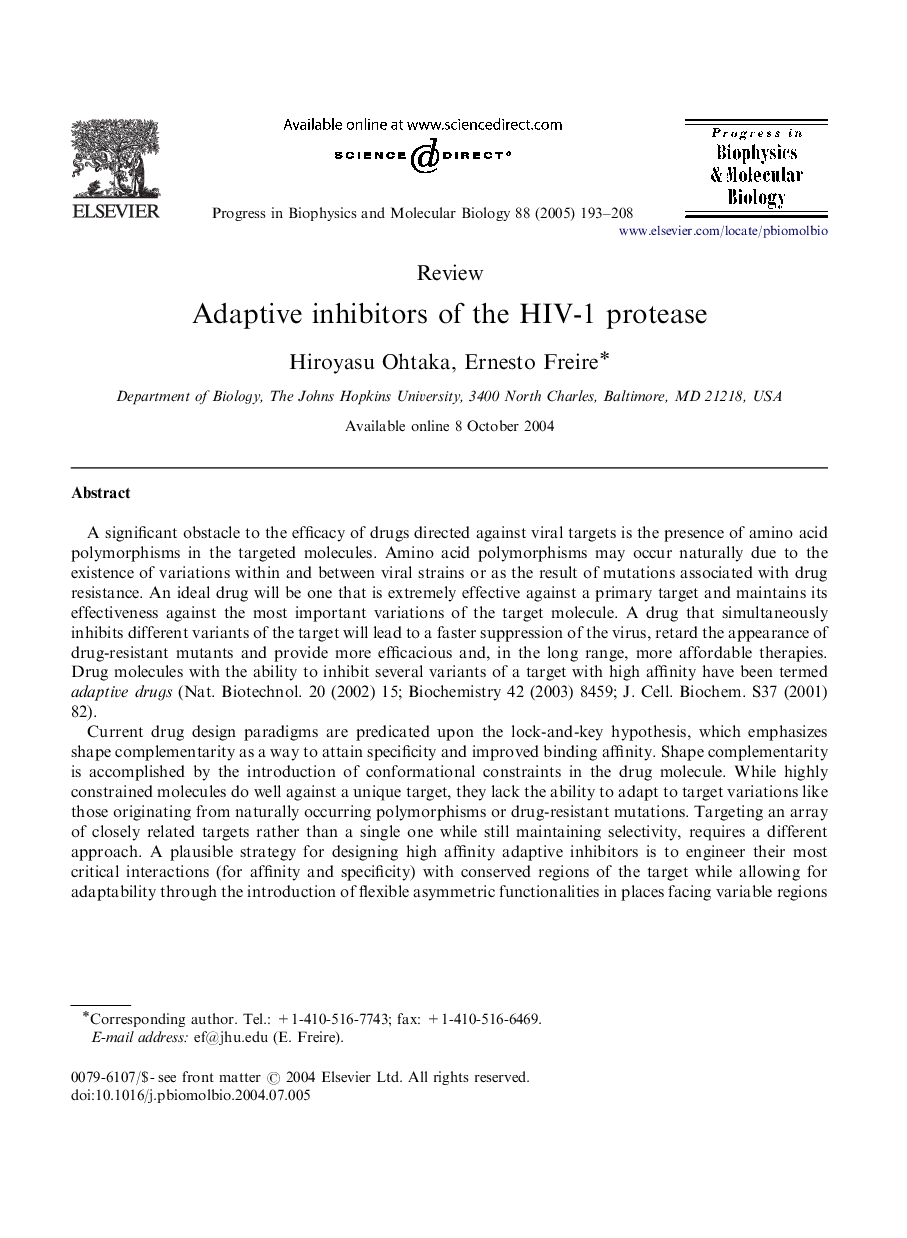| Article ID | Journal | Published Year | Pages | File Type |
|---|---|---|---|---|
| 10883728 | Progress in Biophysics and Molecular Biology | 2005 | 16 Pages |
Abstract
Current drug design paradigms are predicated upon the lock-and-key hypothesis, which emphasizes shape complementarity as a way to attain specificity and improved binding affinity. Shape complementarity is accomplished by the introduction of conformational constraints in the drug molecule. While highly constrained molecules do well against a unique target, they lack the ability to adapt to target variations like those originating from naturally occurring polymorphisms or drug-resistant mutations. Targeting an array of closely related targets rather than a single one while still maintaining selectivity, requires a different approach. A plausible strategy for designing high affinity adaptive inhibitors is to engineer their most critical interactions (for affinity and specificity) with conserved regions of the target while allowing for adaptability through the introduction of flexible asymmetric functionalities in places facing variable regions of the target. The fundamental thermodynamics and structural principles associated with this approach are discussed in this chapter.
Keywords
Related Topics
Life Sciences
Biochemistry, Genetics and Molecular Biology
Biophysics
Authors
Hiroyasu Ohtaka, Ernesto Freire,
